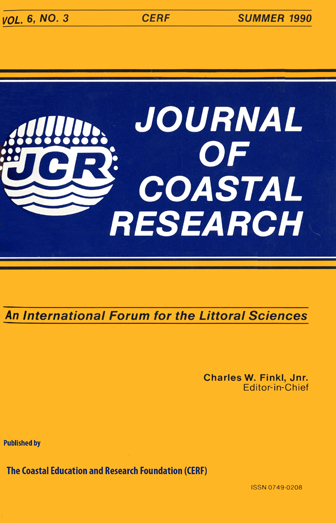Rheological Control of Fine-Sediment Suspension, Cape Lookout Bight, North Carolina
Keywords:
Fluid muds, rheology, resuspension, retentionAbstract
Anoxic to hypoxic fluid muds are accumulating at average rates of 10 cm/yr in the central basin of Cape Lookout Bight, despite low suspended-sediment concentrations in the water column and periodically-energetic currents at the bed. Physical properties of the sediments, which are classified as "highly plastic inorganic clays" on the Casagrande Plasticity Chart, are remarkably uniform: median particle size ranges narrowly between 13 and 18 microns, organic contents between 9 and 15%, and silt/clay ratios between 3 and 6. The rheological behavior of the muds, i.e., low density yield stress development and, in particular, shear thickening (dilatant) behavior, act in such a way as to inhibit particle resuspension and retain sediment on the bed. XRD analysis of the clay sized fraction indicates the presence of illite and kaolinite; however, SEM studies reveal that muds in the bight are not dominated by these clay minerals, but include significant quantities of silt-sized particles of quartz, feldspar, and mica with stepped surfaces and angular corners. A mechanically interlocking fabric, together with an abundance of bacterial mucilage (which serves as a biological glue for macroaggregates in the water column), provide an explanation for the unusual rheological behavior and the retention of muds on the seabed.


